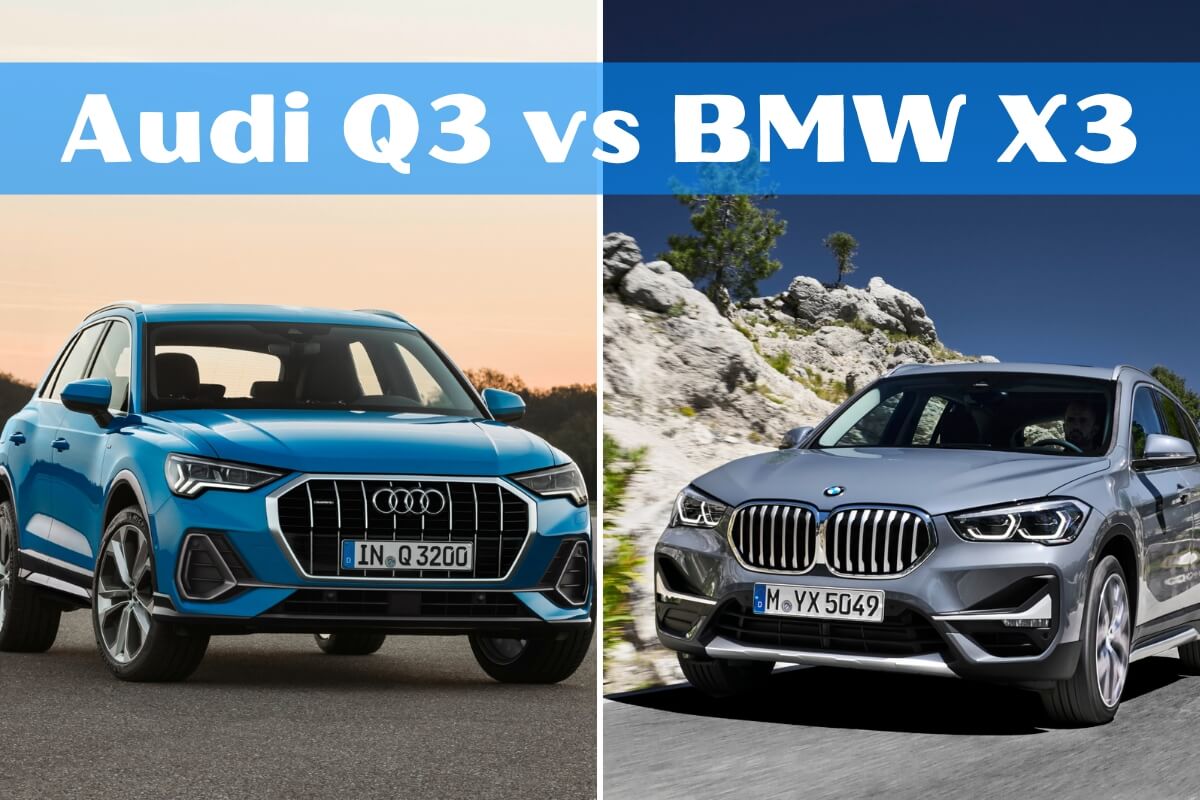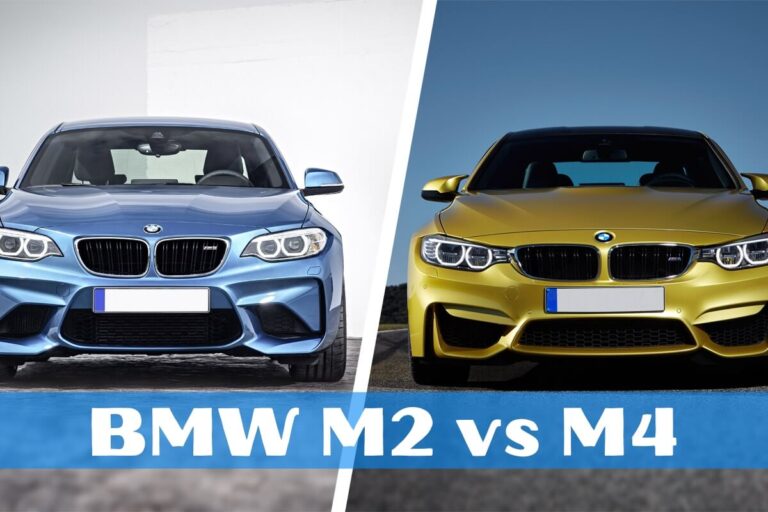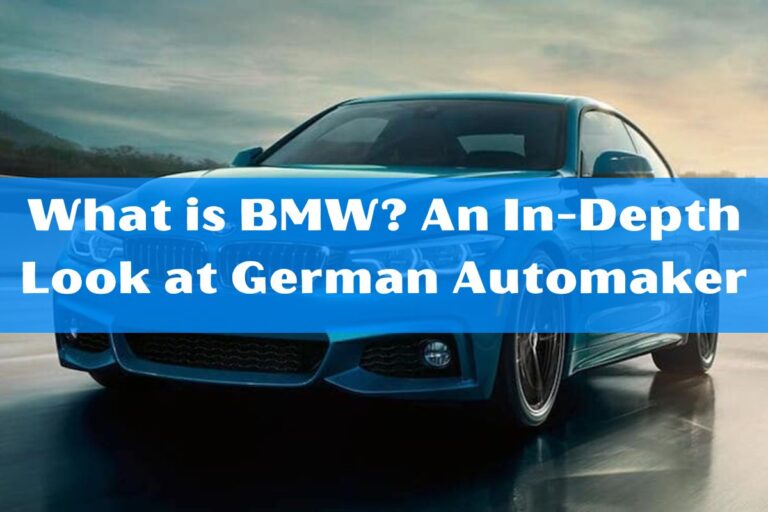Audi Q3 vs BMW X3: Luxury SUV Comparison Guide

Audi Q3 and BMW X3 are top contenders in the premium compact SUV market, offering a mix of style, performance, and luxury. But which one is the better fit for you? Let’s compare their key features and specs to help you make an informed decision.
The key differences between the Audi Q3 and BMW X3 are:
- The Audi Q3 has a lower starting price but fewer engine options than the BMW X3.
- The BMW X3 offers slightly more cargo space and rear legroom compared to the Q3.
- The Audi Q3 comes standard with all-wheel drive, while the BMW X3 offers rear-wheel or all-wheel drive options.
Throughout this post, we’ll explore these and other crucial factors, including pricing, exterior design, interior comfort, performance, safety features, and overall value proposition.
Pricing and Value
When it comes to affordability, the Audi Q3 holds an advantage with a lower starting Manufacturer’s Suggested Retail Price (MSRP) compared to the BMW X3. The base Q3 trim starts around $38,000, while the entry-level X3 costs approximately $46,000.
However, it’s essential to consider the cost of ownership beyond just the initial purchase price. Both brands offer various trim levels and optional packages that can quickly drive up the price tag. Additionally, factors like fuel efficiency, insurance rates, and maintenance costs should be factored in.
In terms of value, the Audi Q3 tends to offer more standard features for the money, such as all-wheel drive, a panoramic sunroof, and advanced driver-assistance technologies. The BMW X3, on the other hand, may require adding pricier option packages to match the Q3’s equipment level.
Exterior Design and Dimensions
When it comes to exterior styling, the Audi Q3 and BMW X3 take different design philosophies. The Q3 features Audi’s signature Singleframe grille and sleek, modern lines that give it a sporty and sophisticated appearance. In contrast, the X3 embraces a more rugged and muscular aesthetic, with a prominent kidney grille and bold body lines.
In terms of size, the BMW X3 has a slight advantage. It’s longer and offers more cargo space behind the rear seats (28.7 cubic feet) compared to the Q3 (23.7 cubic feet). However, when the rear seats are folded down, both SUVs offer a similar maximum cargo capacity of around 48 cubic feet.
For those who prioritize passenger space, the X3 also provides slightly more rear legroom (36.4 inches) than the Q3 (36.1 inches), making it a better choice for taller occupants or families with child seats.
Interior Comfort and Technology
Step inside the cabins of these luxury SUVs, and you’ll find a blend of premium materials, modern amenities, and cutting-edge technologies.
The Audi Q3 impresses with its sleek, minimalist interior design and high-quality materials like leather upholstery and aluminum accents. The infotainment system features a user-friendly touchscreen interface and seamless integration with Apple CarPlay and Android Auto.
The BMW X3 also boasts a well-appointed cabin with premium synthetic or genuine leather seating surfaces and various interior trim options, including wood and aluminum accents. BMW’s iDrive infotainment system is intuitive and feature-rich, offering a range of connectivity and entertainment options.
Both SUVs offer advanced driver-assistance technologies, such as adaptive cruise control, lane-keeping assist, and automatic emergency braking. However, the Audi Q3 includes some of these features as standard equipment, while BMW often bundles them into optional packages.
Performance and Driving Experience
Under the hood, the Audi Q3 and BMW X3 offer turbocharged four-cylinder engine options that deliver a balanced blend of power and fuel efficiency.
The Q3 comes standard with a 2.0-liter turbo-four producing 184 horsepower and 221 lb-ft of torque. This engine is paired with an eight-speed automatic transmission and Audi’s legendary Quattro all-wheel-drive system, providing excellent traction and handling in various driving conditions.
The BMW X3 offers two turbocharged engine choices: a 2.0-liter four-cylinder with 248 horsepower and 258 lb-ft of torque or a more potent 3.0-liter inline-six with 382 horsepower and 369 lb-ft of torque (in the M40i trim). Both engines are mated to an eight-speed automatic transmission, and buyers can choose between rear-wheel drive or BMW’s xDrive all-wheel-drive system.
In terms of fuel efficiency, the Audi Q3 holds a slight edge, with EPA estimates of 22 mpg city and 29 mpg highway, compared to the X3’s 23 mpg city and 29 mpg highway ratings.
When it comes to ride quality and handling, both SUVs offer a well-balanced and composed driving experience. However, the BMW X3 is often praised for its sportier and more engaging driving dynamics, thanks to its rear-wheel-drive biased architecture and tuning.
Safety Ratings and Driver-Assist Technologies
Safety should be a top priority when shopping for a family vehicle, and both the Audi Q3 and BMW X3 perform well in this regard.
The Q3 has earned an overall five-star safety rating from the National Highway Traffic Safety Administration (NHTSA) and a Top Safety Pick+ designation from the Insurance Institute for Highway Safety (IIHS). Standard safety features include automatic emergency braking, lane departure warning, and blind-spot monitoring.
Similarly, the BMW X3 has received a five-star overall safety rating from NHTSA and is an IIHS Top Safety Pick+. It comes standard with a rearview camera and forward collision warning, while features like blind-spot monitoring, lane departure warning, and adaptive cruise control are available as options or included in higher trim levels.
Both SUVs offer advanced driver-assistance technologies that can help mitigate accidents and enhance overall safety. However, the Audi Q3 includes some of these features as standard equipment, while BMW often requires adding pricier option packages.
Verdict: Which Luxury SUV is Right for You?
After considering all the factors, it’s clear that both the Audi Q3 and BMW X3 offer compelling packages in the premium compact SUV segment. Here’s a quick breakdown of their respective strengths:
Strengths of the Audi Q3:
- Lower starting price and better value proposition
- Standard all-wheel drive and advanced safety features
- Sleek, modern exterior design
- Refined and well-appointed interior
Advantages of the BMW X3:
- More powerful engine options (including a potent inline-six)
- Slightly more cargo space and rear legroom
- Sportier driving dynamics and engaging handling
- Prestigious brand cachet
Ultimately, the choice between these two models will depend on your specific priorities and preferences. If you value a lower cost of entry, standard all-wheel drive, and a well-equipped interior for the money, the Audi Q3 could be the better pick. However, if you prioritize performance, extra cargo space, and the brand prestige of BMW, the X3 might be the way to go.
Whichever you choose, both the Audi Q3 and BMW X3 offer compelling packages in the luxury compact SUV segment, delivering a blend of style, performance, and premium amenities that are sure to impress.
Ending Thoughts
In the battle of the luxury compact SUVs, the Audi Q3 and BMW X3 put up a fierce fight. While the Q3 impresses with its value proposition, standard all-wheel drive, and refined interior, the X3 counters with more powerful engine options, slightly more cargo space, and BMW’s renowned driving dynamics.
Ultimately, the choice between these two models comes down to your personal preferences and priorities. If you’re looking for a well-equipped SUV with a lower starting price and standard advanced safety features, the Audi Q3 could be the ideal fit. However, if you prioritize performance, extra cargo space, and the brand cachet of BMW, the X3 might be the better choice.
No matter which you choose, you can rest assured that both the Audi Q3 and BMW X3 deliver the premium experience and luxury amenities that make them standouts in the compact SUV segment.






